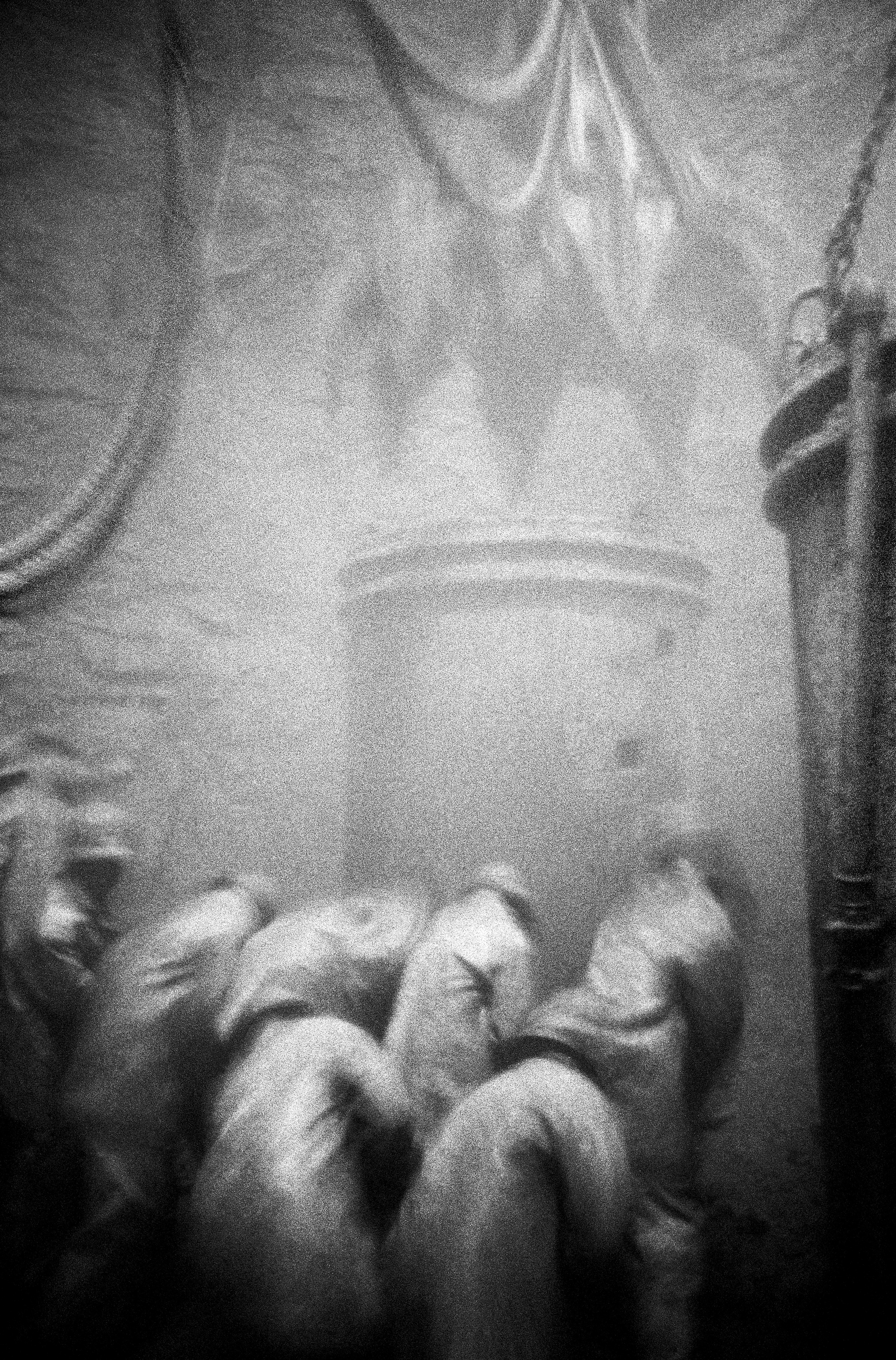David Goldblatt

“Labour underground,” Nadine Gordimer wrote in A Time and Tailings, “epitomises the black man’s baptism by darkness and dust into Western civilisation.” Her religious metaphor finds particular resonance in Goldblatt’s Shaftsinking photographs, a series of images taken in the low-light of a deep-level mineshaft. Unlike Goldblatt’s other, above-ground images, these photographs are abstract and atmospheric. Shot with only the ambient light reflected from miners’ helmets, on high-speed, grainy film, the unfocused scenes suggest the flurry of activity, the movement and energy of the work at hand. In The last of the bigger rocks has just been dropped into a kibble, the miners, bent to load the rubble, bow forward in their work. It is a gesture easily mistaken for reverence, the men praying before the metal altar. In the glowing light, the vault becomes – momentarily – a cathedral, built not to a god but to white capital.
This photograph is included in On the Mines (first edition), 1973; Lifetimes Under Apartheid, 1986; Fifty-one Years, 2001; Kith Kin & Khaya, 2011; On the Mines (second edition), 2012; and Structures of Dominion and Democracy, 2018.
“I was drawn,” the late photographer David Goldblatt wrote, “not to the events of the time but to the quiet and commonplace where nothing ‘happened’ and yet all was contained and immanent.” A preeminent chronicler of South African life under apartheid and after, Goldblatt bore witness to how this life is written on the land, in its structures or their absence. Unconcerned with documenting significant historic moments, his photographs stand outside the events of the time and yet are eloquent of them. Through Goldblatt’s lens, the prosaic reveals a telling poignancy. Even in those images that appear benign, much is latent in them – histories and politics, desires and dread. His photographs are quietly critical reflections on the values and conditions that have shaped the country; those structures both ideological and tangible. Among his most notable photobooks are On the Mines (1973), Some Afrikaners Photographed (1975), In Boksburg (1982), The Structure of Things Then (1998), and Particulars (2003).
